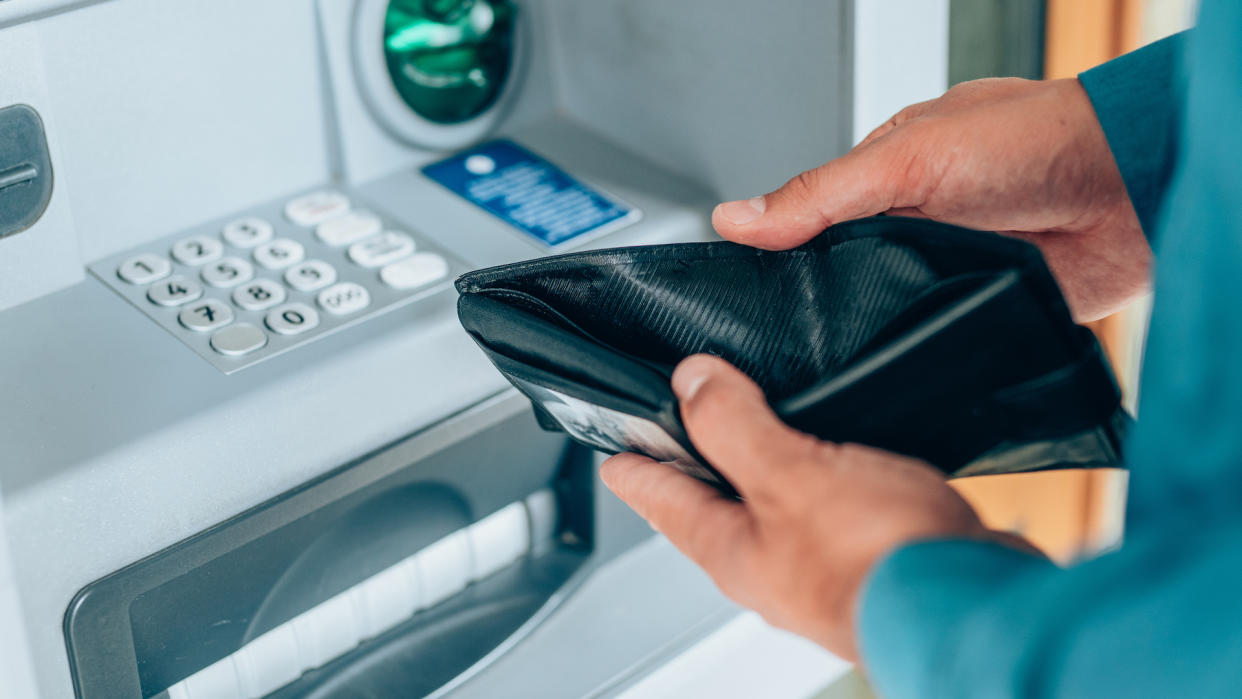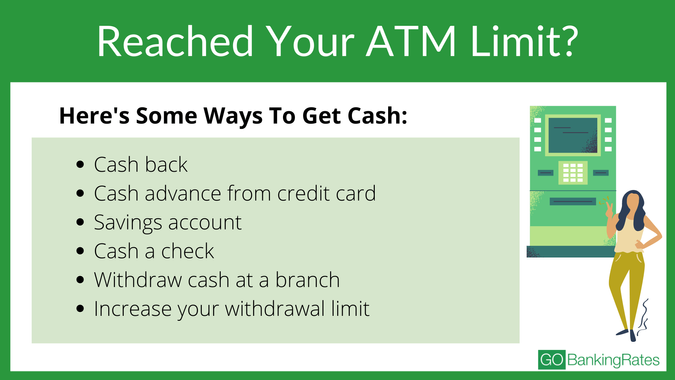Your Guide to Daily ATM Withdrawal Limits and Debit Purchase Limits

All banks and credit unions place limits on the amount of money that a person can withdraw from their account at one time. Here’s what you need to know about limits on ATM withdrawals and debit card purchases.
What Is Your ATM Withdrawal Limit?
ATM limits vary for each bank or credit union. Daily limits on cash withdrawals typically range from $300 to $1,000 per day, depending on your account type and agreement with your financial institution.
Can I Withdraw $5,000 From an ATM?
It’s not unheard of, but in most cases, the answer is no. Allowing withdrawals of $5,000 from an ATM would mean refilling the machine more frequently and requiring a bank branch to have more cash on hand.
Alternatives to using an ATM to access $5,000 in a single transaction or over the course of a day include:
Going into a bank branch
Using a debit card to make a purchase
Transferring via an automated clearing house (ACH) transaction to another account
Requesting to wire money for a payment
Why Do ATM Withdrawal Limits Exist?
Consumers with money deposited in a bank or credit union face limits on ATM withdrawals and debit card purchases as a way of protecting the financial institution and the consumer.
If a debit card and PIN are stolen, daily ATM withdrawal and debit card purchase limits ensure that an account isn’t wiped clean by fraudsters. Financial institutions also want to ensure they have enough cash on hand to meet the demands of cash withdrawals for other customers on the same day.
If you have a large amount of money in a bank account and want to withdraw it, plan ahead. You may need to give your financial institution advance notice so it can order additional cash for your request. Alternatively, you may accept a cashier’s check or wire transfer for the balance in your account.
What Is Your Debit Card Purchase Limit?
Purchase limits on a debit card are usually higher than ATM withdrawal limits and may even allow you to spend the entire balance in your checking account. Debit card limits vary greatly based on rules set by the bank or credit union.
Factors that affect a person’s withdrawal and purchase limits include:
Type of account
Length of time as a customer
Average daily balance
History of overdrafts or exceeding your account limit
Credit score and credit history
Consumers who need a temporary increase for a one-time large purchase should call their financial institution. Banks and credit unions often lift limits for a short time and on a case-by-case basis.
Daily ATM Withdrawal and Debit Card Purchase Limits at Major Banks and Credit Unions
Here’s what you need to know about the limits at various banks and credit unions around the country.
Bank or Credit Union | Daily ATM Withdrawal Limit | Daily Debit Card Purchase Limit |
|---|---|---|
$500 in first 90 days, then up to $1,000 | $500 in first 90 days, then $5,000 | |
Bank of America, Member FDIC | Varies | $5,000 |
$1,000 for 360 Checking; $600 for non-360 accounts | $5,000 | |
Depends on the account type and a case-by-case basis | Depends on the account type and a case-by-case basis | |
$1,500 to $2,000, depending on the account type | $5,000 to $10,000, depending on the account type | |
$1,000 | $3,000 to $5,000, depending on the account type | |
Depends on the account type and a case-by-case basis | Depends on the account type and a case-by-case basis | |
$808 | $5,000 | |
$1,000 | $4,000 |
How To Get Cash If You’ve Reached Your ATM Withdrawal Limit
Here’s a look at options you can consider if you’ve hit your ATM withdrawal limit and need to access more of your money.

Get Cash at Checkout
In the event you reach your daily ATM withdrawal limit and still need more cash, you can make a PIN-based debit card purchase at a retailer. Many retailers allow up to $100 in cash back at checkout with a purchase.
Credit Card Cash Advance
Another way to access more cash after reaching a withdrawal limit is to utilize the cash advance option on a credit card. Be careful using this feature too often because of high interest rates on cash advances. Be prepared to pay back the cash advance quickly to avoid overpaying in interest and fees.
Write a Check
Although consumers use checks less and less, it’s still possible to use one to access cash in a bank account. Depending on the financial institution, you may be able to cash a personal check to access more money in a pinch.
Transfer Money From a Savings Account
If you have extra money in savings, you can transfer funds from your savings account to your checking account. Alternatively, you can have an ACH payment debited from your savings account.
Keep in mind that many banks limit the number of convenience transactions on a savings account to six per statement period. Some banks will impose penalties on customers who exceed the limit. In such cases, this option is best reserved for emergencies.
It’s important to weigh the pros and cons of accessing extra cash past a daily limit. Before making any moves, consider whether a purchase can wait until the next day or if there is another way to pay for a product or service other than cash.
How To Increase Your Withdrawal and Purchase Limits
Some banks and credit unions are willing to work with customers to increase limits permanently. Whether this is an option for you depends on your bank’s policies and procedures and your relationship with the financial institution.
Maintaining a higher average daily balance and avoiding overdrafts will increase the likelihood of your bank approving a limit increase. Keeping your accounts in good standing shows that you know how to manage money and spend within your means.
Final Take
ATM withdrawal and debit card purchase limits are in place for a reason. If you find yourself hitting, or even exceeding, your limits, you may want to talk to your financial institution to request higher limits — or rethink the way you structure your spending.
FAQ
How do I write a check for cash withdrawal?
To write a check for cash withdrawal, write your name on the line following the words "Pay to the order of." Then, fill out the rest of the check as you normally would. You can also write the word "Cash" on the payee line. However, writing the word "Cash" instead of your name will allow anyone to cash the check, which will be a problem if you lose the check or someone steals it before you are able to cash it at your bank.
Can I withdraw cash from my credit card?
Many credit cards allow cash advances, but they can be quite expensive. According to the Consumer Financial Protection Bureau, a credit card cash advance is considered a short-term loan, and a withdrawal fee and a higher rate of interest will likely apply.
Which bank has the highest ATM withdrawal limit?
In general, Morgan Stanley Bank has the highest ATM withdrawal limit at $1,500 to $5,000. However, regardless of the bank, ATM withdrawal limits can vary based on the type of account you have and your banking relationship.
Cynthia Measom, Sean Dennison and Daria Uhlig contributed to the reporting for this article.
Information is accurate as of March 11, 2023.
This article originally appeared on GOBankingRates.com: Your Guide to Daily ATM Withdrawal Limits and Debit Purchase Limits
